De la Gastronomie à l’Hôtellerie : Les 6 leçons à retenir du lancement de la marque Fauchon L’Hôtel
ou Comment créer votre marque hôtelière
Le lancement du Fauchon L’Hôtel Paris, marque hôtelière de la marque de gastronomie Fauchon, est l’occasion pour Emmanuelle Mordacq (NeoPlaces), créatrice du concept, de nous donner sa vision de la création de marque hôtelière, pour une marque qui vient d’un autre univers.
« Les translations de marque d’autres univers vers l’univers hôtelier sont nombreuses et les réussites, malheureusement, peu nombreuses. Après un premier hôtel impressionnant, les marques hôtelières de ces nouveaux venus semblent peu à même de se développer davantage.
En créant des concepts hôteliers qui ont réussi à se développer dans le monde entier, et tout dernièrement avec la création de Fauchon L’Hôtel, j’ai bâti un chemin en 6 étapes que je partage aujourd’hui.
1/ Trouver sa légitimité
Quelle que soit la raison pour laquelle la marque d’origine souhaite se développer dans l’hôtellerie, il est absolument essentiel qu’elle trouve la raison qui rendra cette démarche pertinente et intuitive pour tout voyageur. Et cette raison peut être très différente de celle pour laquelle la décision a été prise à l’origine (intérêt financier, décision des propriétaires, politique d’extension de la marque). Pour être directe, une raison Business n’est pas une bonne raison pour motiver des clients. Vous devez trouver une raison qui les convaincra.
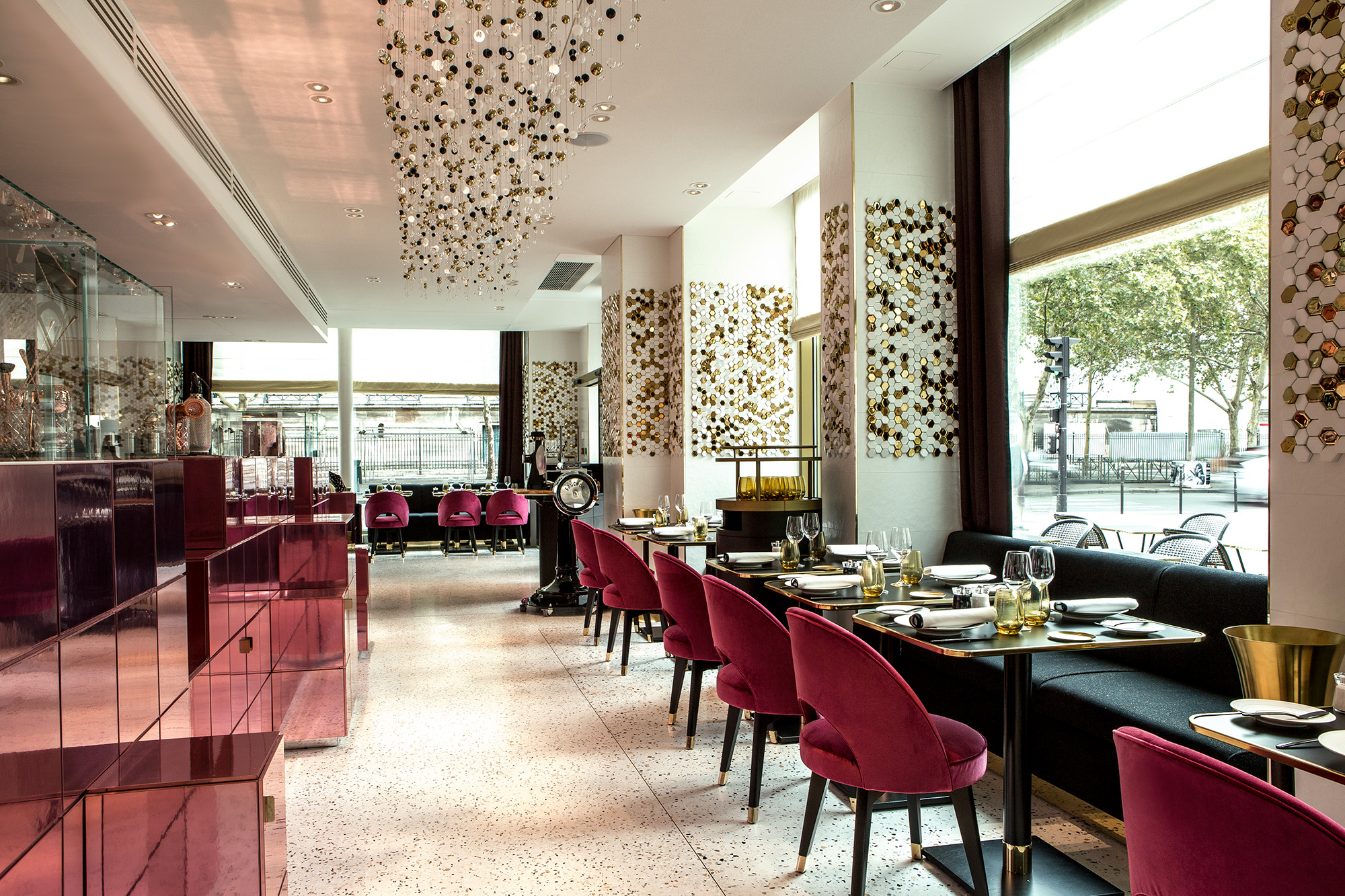
2/ Bien définir sa cible
La marque originelle a une cible bien identifiée. Pourtant, la marque hôtelière va avoir une cible légèrement différente car en changeant d’univers de référence, certains éléments vont évoluer. LE filtre initial du voyageur, ou du client fréquentant les lieux hôteliers, est parfois assez différents de la clientèle principale de la marque originelle.
Ainsi les clients de Fauchon Paris, qui s’offrent le luxe gastronomique, ne vont pas tous se retrouver dans la cible de Fauchon L’Hôtel, hôtel de luxe, car entre s’offrir un éclair à 7€ et une chambre à 850€, l’investissement est différent. Il faudra donc ne pas être littéral mais s’adapter à la réalité hôtelière. En revanche, votre cible hôtelière partagera des points communs avec votre cible originelle, notamment sa façon de voir la vie, ses valeurs et ses traits de personnalité.
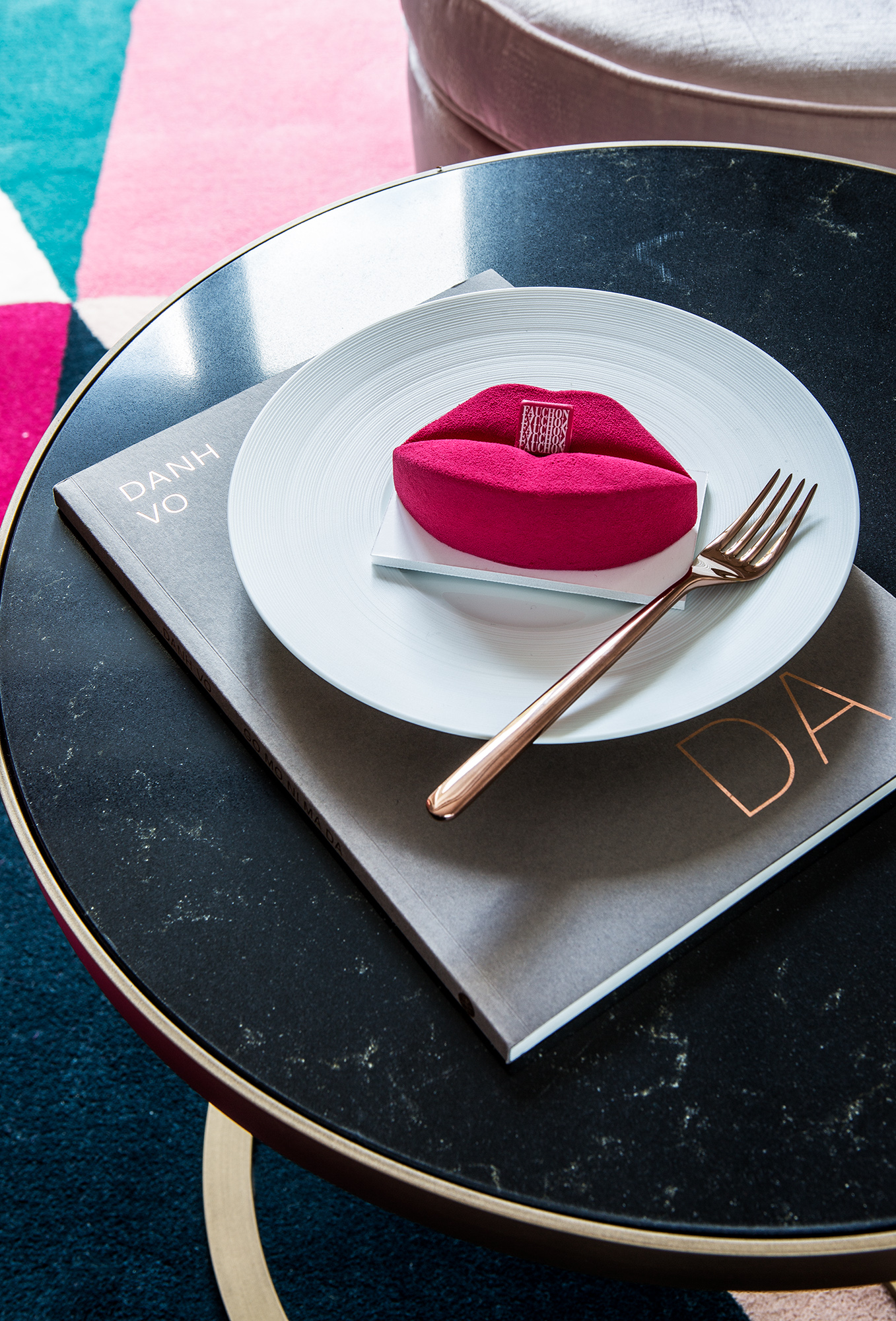
3/ Définir son expérience, puis définir l’hôtel qui va avec (dans cet ordre)
Sur la base du travail de la cible, il s’agit ensuite de décrire l’expérience que cette cible doit vivre, les émotions qu’elle doit ressentir, les activités qu’elle va privilégier dans le lieu, avant même de définir précisément l’hôtel en lui-même. On s’assure ainsi d’offrir un lieu qui soit absolument juste par rapport à la marque, avant d’entrer dans les contraintes de l’univers hôtelier.
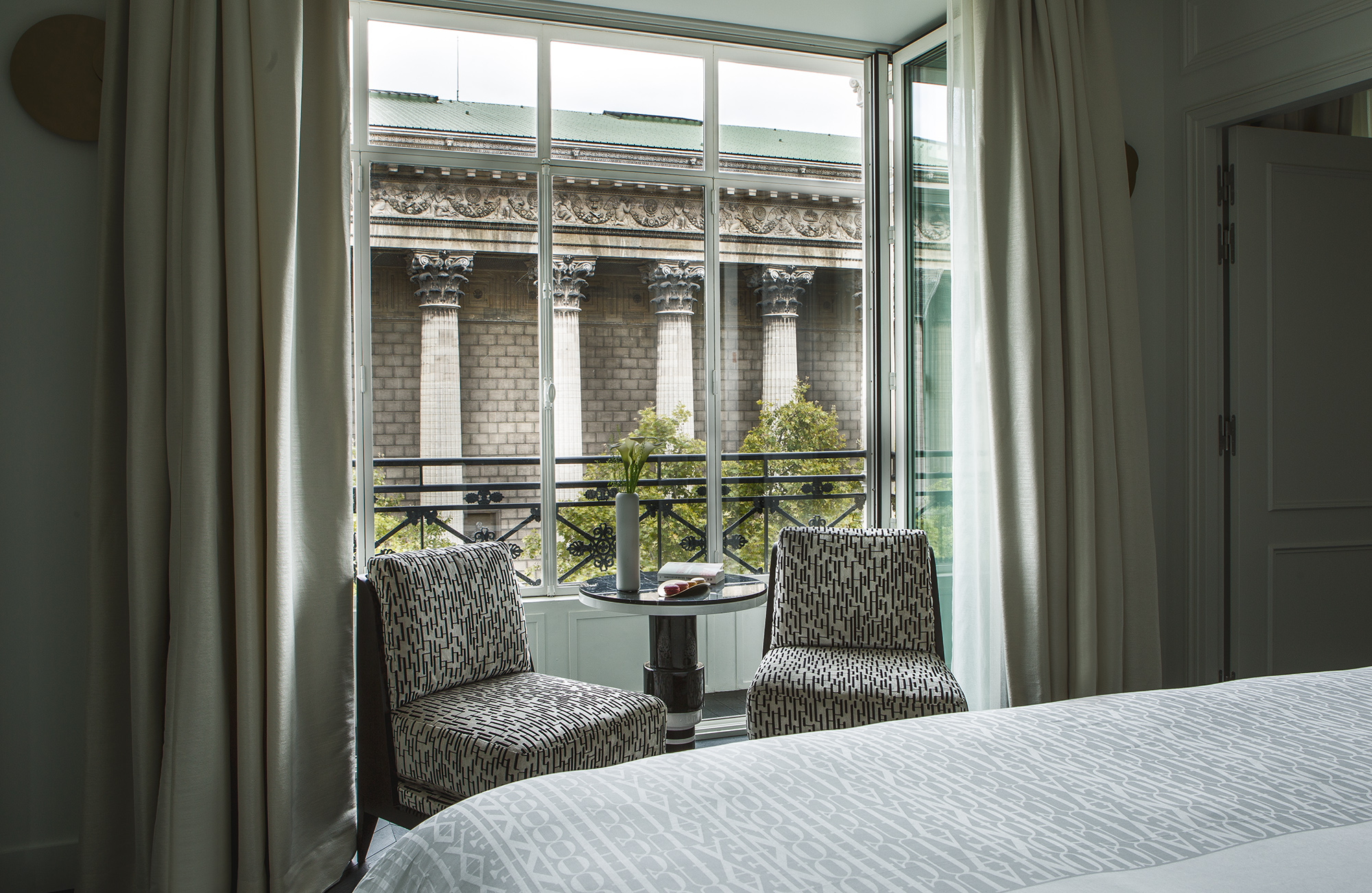
4/ Aller au-delà de la catégorie hôtelière, notamment dans l’expérience en chambre
C’est l’étape où l’on se confronte avec la réalité de l’univers hôtelier. Nouvel arrivant dans l’univers hôtelier, on ne peut être prétendre être un hôtel sans être un véritable hôtel. Il s’agit alors de définir précisément l’ensemble des caractéristiques de votre hôtel, en fonction de son emplacement et de son objectif.
De même, une attention tout particulière doit être portée à l’expérience en chambre car un hôtel permet principalement de bien dormir hors de chez soi, et l’expérience en chambre, même si elle peut être moins spectaculaire pour les non-clients, est le cœur de la promesse. Il faut donc tout particulièrement la soigner.

5/ Créer des Marqueurs qui font sens pour tous les univers de la marque
Un Marqueur est un élément significativement différent, propre à la marque, dans la façon de délivrer l’expérience au visiteur. Il peut prendre des formes très diverses et est toujours ancré dans la logique de marque : service spécifique, façon d’accueillir, type de lit, moment dans le séjour …
Or lorsque l’on change d’univers, on peut céder à la tentation d’oublier l’univers originel et créer des marqueurs qui n’ont plus rien à voir avec l’univers d’origine. Il est pourtant crucial de créer des Marqueurs qui enrichissent les deux univers à la fois.
Ainsi, l’un des Marqueurs les plus innovants et disruptif de Fauchon L’Hôtel est la création d’un Gourmet Bar en chambre. A l’heure de la disparition des mini-bars dans toute l’hôtellerie, Fauchon L’Hôtel a choisi de le réinventer en créant un meuble de designer spécifique, portant la personnalité de la marque et proposant un moment de dégustation des produits Fauchon, unique et gratuit ! Cela rend l’expérience en chambre autrement plus agréable et nourrit en même temps l’image des produits frais Fauchon.
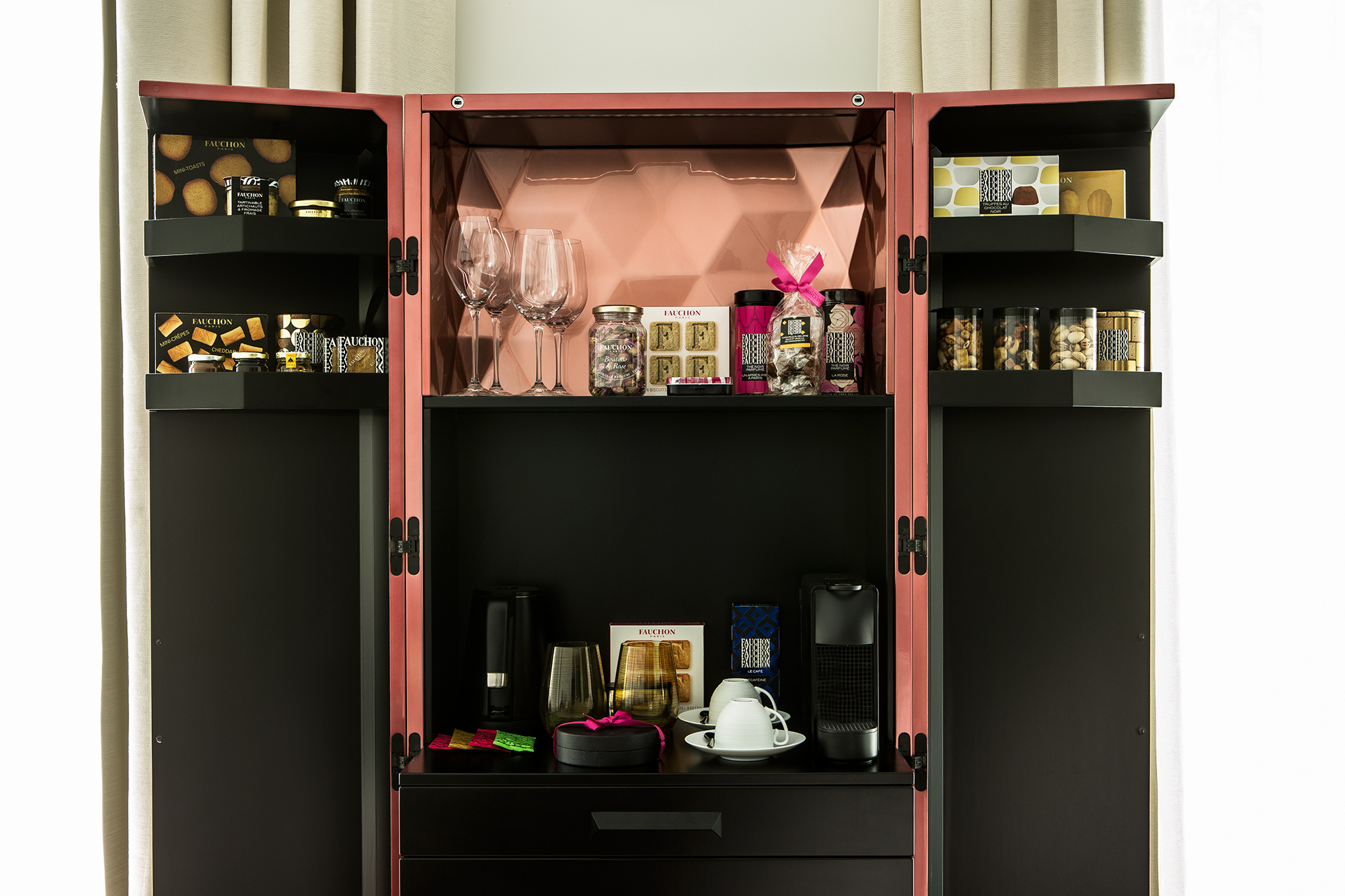
6/ Eviter le piège du design
Décliner les codes graphiques et identitaires de marque n’est pas créer une marque. Le risque de devenir une démonstration design des codes de marque est le piège dans lequel tombent beaucoup de marques qui essaient d’entrer dans l’univers hôtelier.
Même si les hôtels créent un décor de plus en plus travaillé pour leurs clients, ce n’est que le décor de l’expérience qui reste elle, centrée sur l’accueil, le service, les moments passés sur place.
Le risque est immense de devenir un décor creux alors que c’est l’opportunité de créer une nouvelle façon d’entrer en relation avec la marque. »
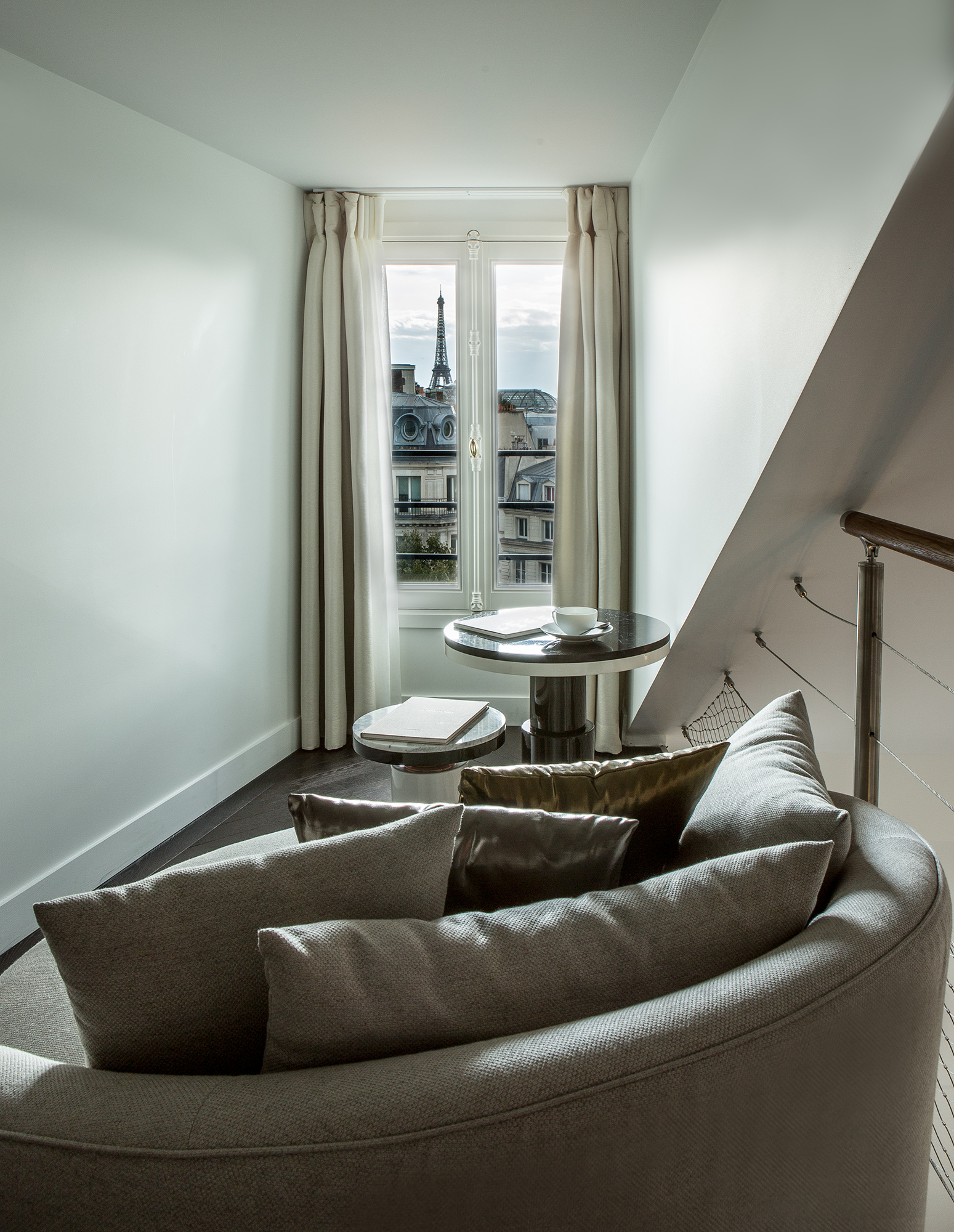
From Gastronomy to Hospitality
The 6 steps to launch of the brand Fauchon L’Hôtel
How to create your hotel brand when you come from another category?
The launch of Fauchon L’Hôtel Paris, the first hotel in the Fauchon’s hotel brand, is the opportunity for Emmanuelle Mordacq (NeoPlaces), creator of the concept, to give us her vision on how to create a hotel brand, when your original brand comes from another universe.
“Example of brand translation from another category to the hotel world are adding up and the successes seem to be unfortunately few. Usually, after an impressive first hotel, the hotel brands of these newcomers seem unlikely to develop further.
Having created successful hotel concepts around the world, and with the launch of the promising Fauchon L’Hôtel brand, I’ve built a 5-step path to concept creation success, that I’m excited to share today.
1 / Find your reason-why
Whatever the reason for the original brand to want to expand into Hospitality, what is absolutely fundamental is that the brand finds a reason that would make this move relevant and intuitively sensible to any traveler. And this reason-why can be quite different than the reason why the decision was taken originally (financial interest, ownership decision, brand extension policy). To make it short, a business reason is not a good reason-why to motivate the guests. You need to find a reason that will motivate them.
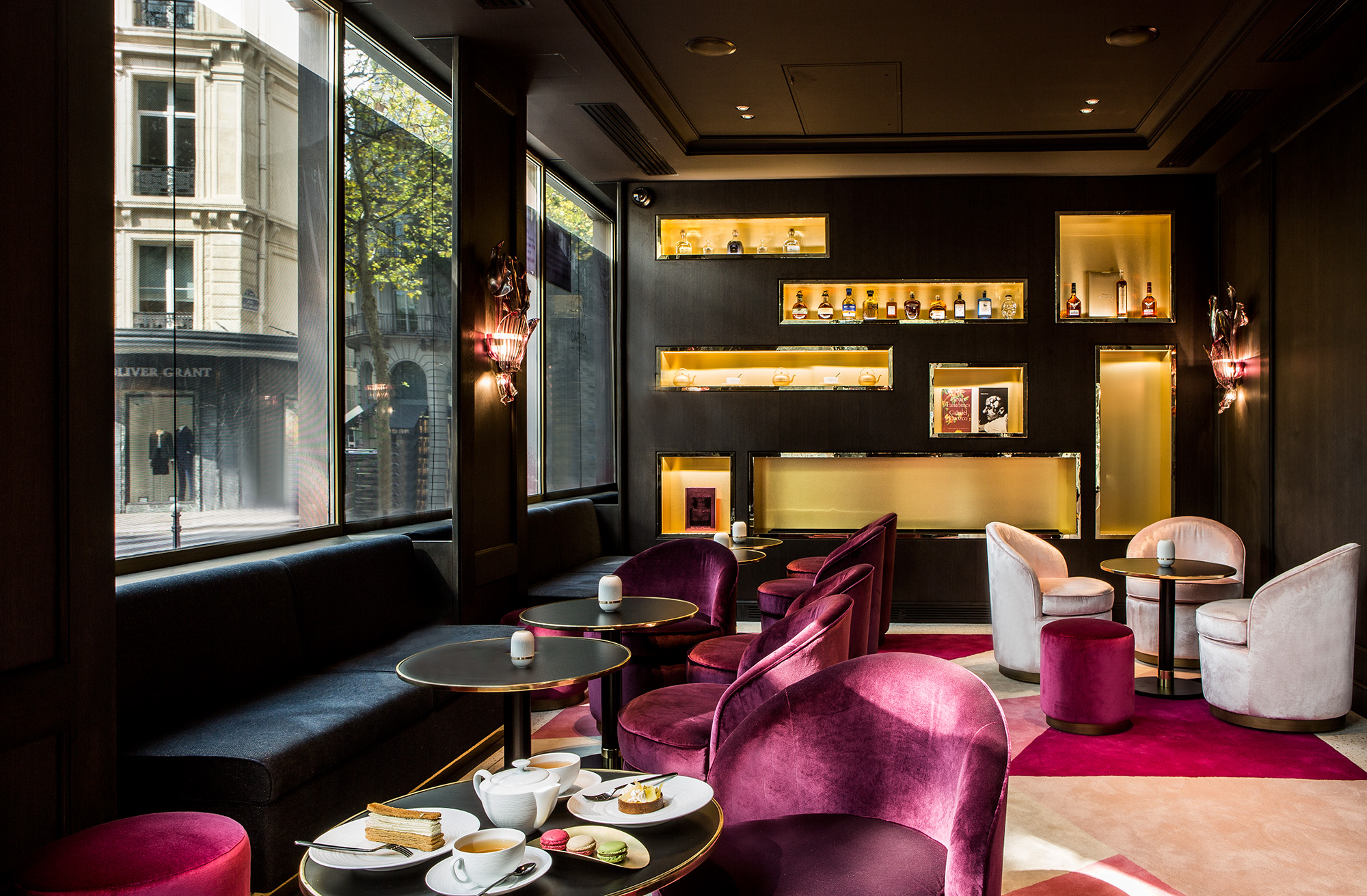
2 / Understand your target
The original brand usually has a well identified target. However, the hotel brand is going to have a slightly different target because in changing the universe of reference, certain elements will evolve. The central hospitality target (traveler and frequent users of hotel) is sometimes quite different from the main clientele of the original brand.
For example, the customers of Fauchon Paris, who offer gourmet luxury, will not all find themselves in the target of the 5* Fauchon L’Hôtel, simply because between affording an “éclair” at €7 and a room at €850 does not relate to the same client category. That’s why you need to be careful not to be too literal on the target but adapt to the hospitality reality.
On the other hand, your hotel target will share large similarities with your original target, including their vision (and priorities) in life, their values and their personality traits.
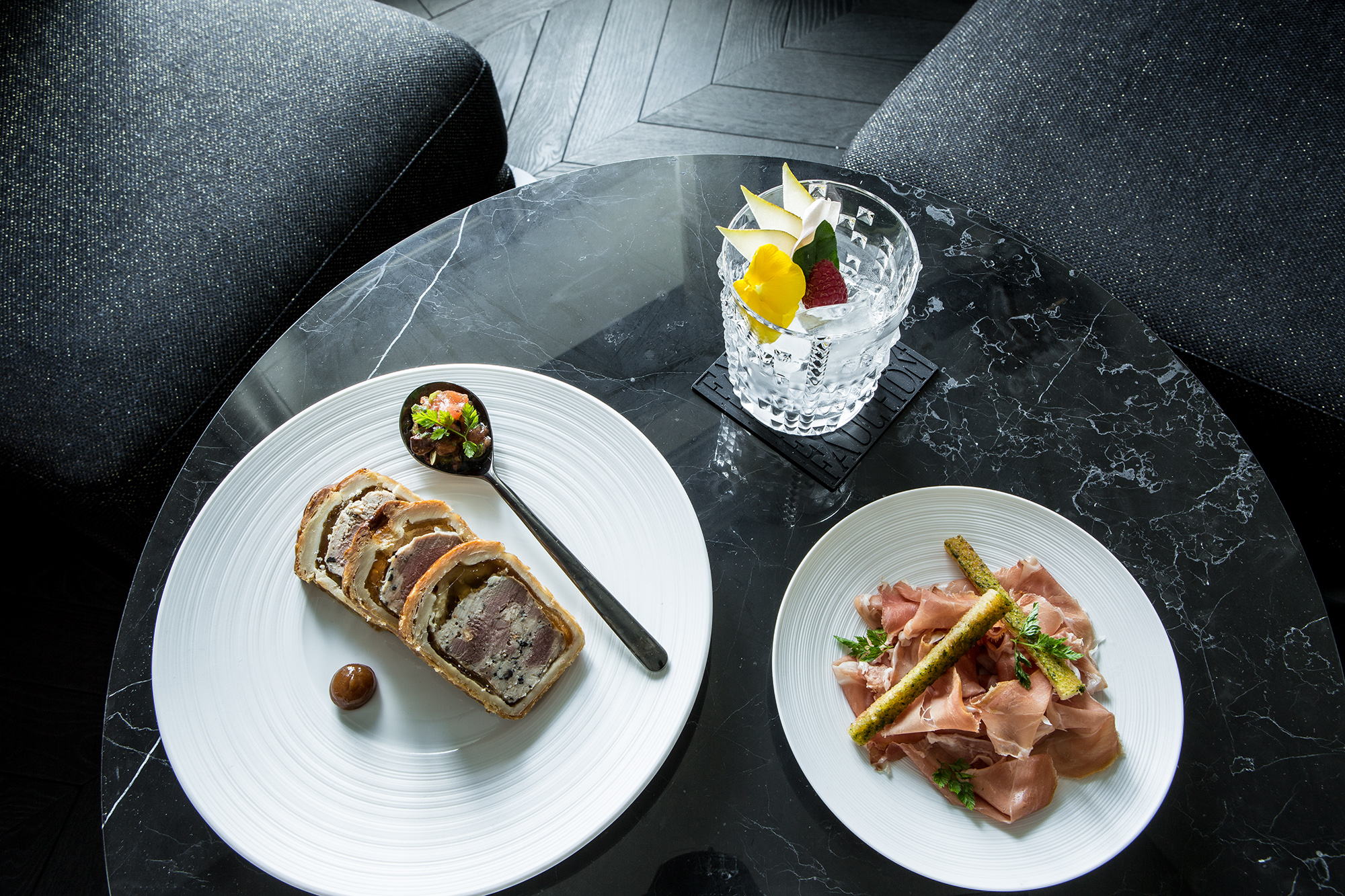
3 / Define your experience, then define the hotel that goes with it (in that order)
On the basis of the target’s work, you then need to define the experience that this target must live, the emotions they must feel, the activities they will enjoy in the place, before even defining the hotel itself. This ensures to create a place that is absolutely right compared to the brand, before entering the constraints of the hotel world.
For Fauchon L’Hôtel, we created the idea of “Living “La ville en Rose” (enjoying a city’pleasures) before defining the hotel as GLAM (discover the concept on this link).
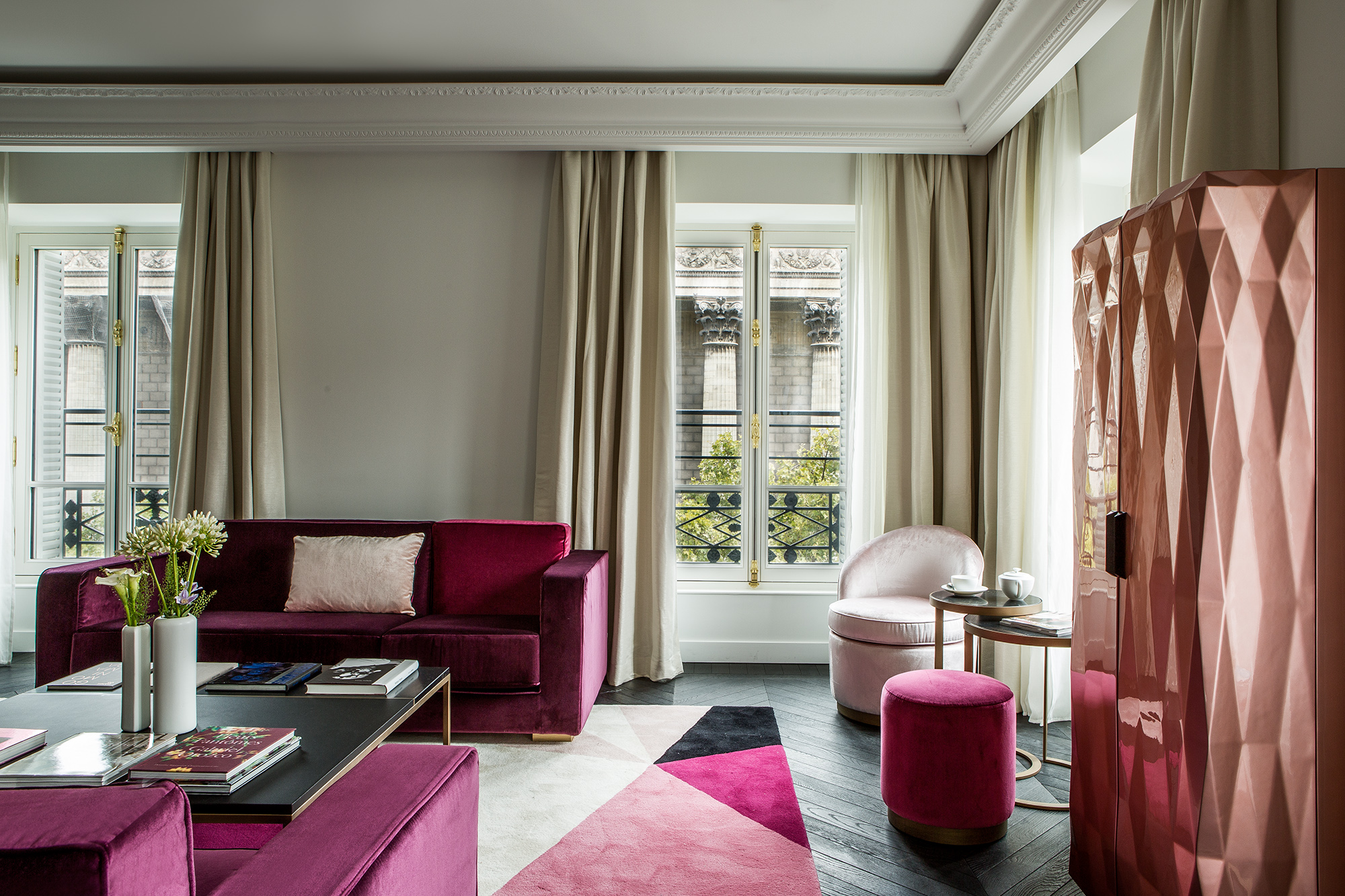
4 / Go beyond the hotel’s category expectations, especially in the room experience
This is the stage where one confronts the experience defined with the reality of the hotel world. As newcomers to the hotel world, those brands cannot claim to be a hotel without being a genuine hotel. In this step, you precisely define all the characteristics of your hotel, according to its location, its category and its objective.
A specific focus needs be paid to the in-room experience. A hotel is primarily a place to sleep well outside of one’s home. So, the in-room experience, even if less spectacular for non-guests, is the heart of the promise. It is therefore particularly necessary to treat it perfectly.
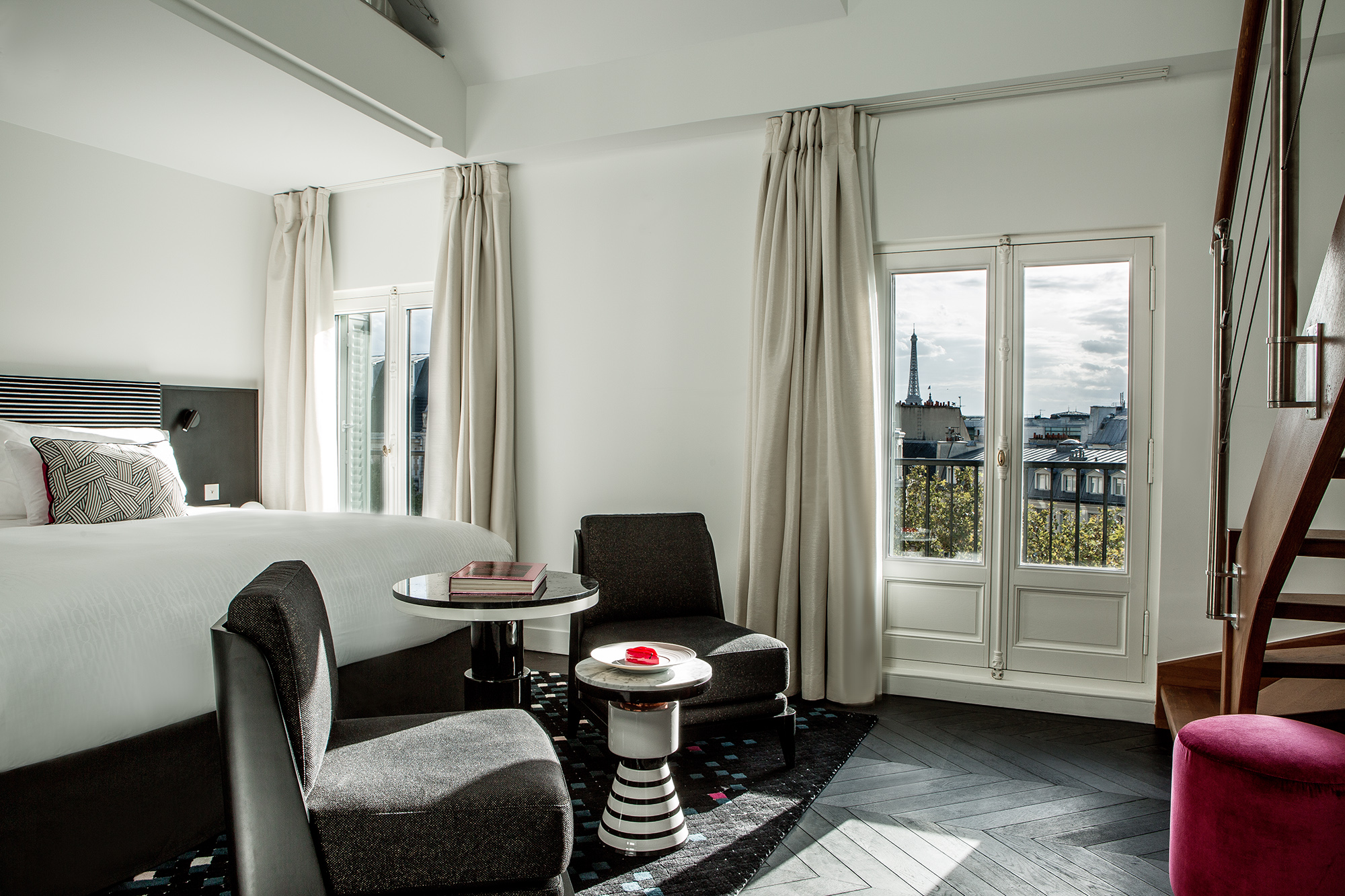
5 / Create Markers that make sense for all the universes of the brand
Markers are significantly different brand-specific elements in the delivering of the guest experience. They can take very different forms and is always anchored in the brand DNA: it can be a specific service, a welcome ritual, a type of bed, a moment during the stay …
But when a brand enters the Hospitality universe, it can give in to the temptation to forget the original universe and create Markers that have nothing to do with the universe of origin. Yet it is crucial to create Markers that enrich both worlds at once.
Thus, one of the most innovative and disruptive marker of Fauchon L’Hôtel is the creation of a Gourmet Bar in room. At the time of the disappearance of mini-bars throughout hospitality, Fauchon L’Hôtel has chosen to reinvent it by creating a specific designer piece of furniture, bearing the personality of the brand and offering a tasting moment of a vast choice of complimentary gourmet Fauchon products! This makes the room experience uniquely enjoyable and at the same time feeds the image of the original Fauchon brand.

6 / Go beyond the decor
Declining branded graphic codes is not creating a brand. The risk of becoming a brand design demonstration is the pitfall in which a lot of brands that try to enter the hospitality world fall.
Even if the hotels do create more and more astonishing interior design, it is only the decor of the hotel experience, which remains the true offer, centered on the walcome, the service, the moments spent on the premises.
The risk is immense to become just a hollow décor, when it is the best opportunity to create a new way to relate and interact with the brand.”
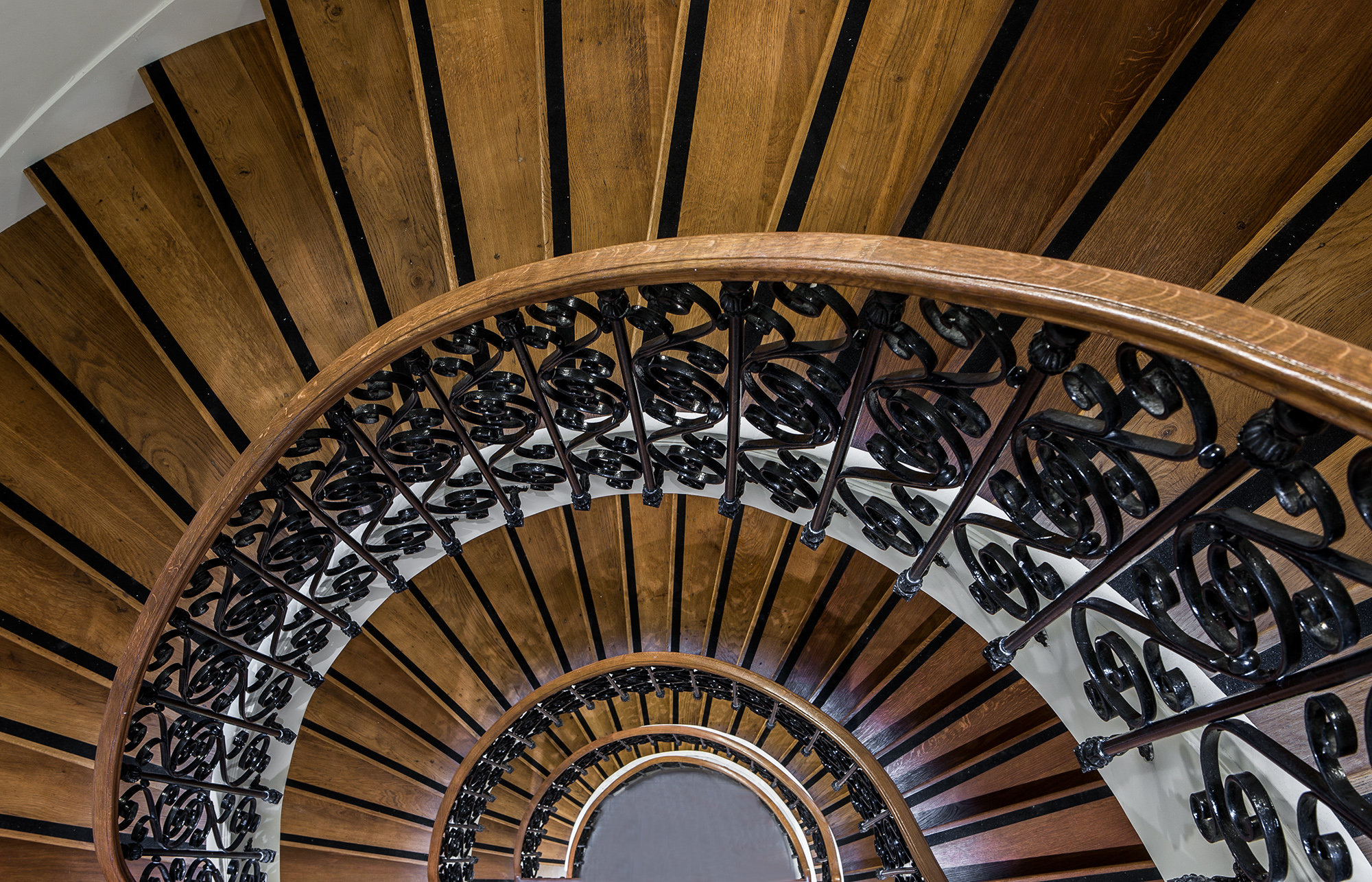
Place/ Fauchon L’Hôtel Paris (Fauchon Hospitality)
Hotel concept/
Credit Photo / Gilles Trillard
Informations/ NeoPlaces
Suivez Emmanuelle Mordacq
Les 6 leçons à retenir du lancement de la marque Fauchon L’Hôtel
De la Gastronomie à l’Hôtellerie : Les 6 leçons à retenir du lancement de la marque Fauchon L’Hôtel
ou Comment créer votre marque hôtelière
Le lancement du Fauchon L’Hôtel Paris, marque hôtelière de la marque de gastronomie Fauchon, est l’occasion pour Emmanuelle Mordacq (NeoPlaces), créatrice du concept, de nous donner sa vision de la création de marque hôtelière, pour une marque qui vient d’un autre univers.
« Les translations de marque d’autres univers vers l’univers hôtelier sont nombreuses et les réussites, malheureusement, peu nombreuses. Après un premier hôtel impressionnant, les marques hôtelières de ces nouveaux venus semblent peu à même de se développer davantage.
En créant des concepts hôteliers qui ont réussi à se développer dans le monde entier, et tout dernièrement avec la création de Fauchon L’Hôtel, j’ai bâti un chemin en 6 étapes que je partage aujourd’hui.
1/ Trouver sa légitimité
Quelle que soit la raison pour laquelle la marque d’origine souhaite se développer dans l’hôtellerie, il est absolument essentiel qu’elle trouve la raison qui rendra cette démarche pertinente et intuitive pour tout voyageur. Et cette raison peut être très différente de celle pour laquelle la décision a été prise à l’origine (intérêt financier, décision des propriétaires, politique d’extension de la marque). Pour être directe, une raison Business n’est pas une bonne raison pour motiver des clients. Vous devez trouver une raison qui les convaincra.
2/ Bien définir sa cible
La marque originelle a une cible bien identifiée. Pourtant, la marque hôtelière va avoir une cible légèrement différente car en changeant d’univers de référence, certains éléments vont évoluer. LE filtre initial du voyageur, ou du client fréquentant les lieux hôteliers, est parfois assez différents de la clientèle principale de la marque originelle.
Ainsi les clients de Fauchon Paris, qui s’offrent le luxe gastronomique, ne vont pas tous se retrouver dans la cible de Fauchon L’Hôtel, hôtel de luxe, car entre s’offrir un éclair à 7€ et une chambre à 850€, l’investissement est différent. Il faudra donc ne pas être littéral mais s’adapter à la réalité hôtelière. En revanche, votre cible hôtelière partagera des points communs avec votre cible originelle, notamment sa façon de voir la vie, ses valeurs et ses traits de personnalité.
3/ Définir son expérience, puis définir l’hôtel qui va avec (dans cet ordre)
Sur la base du travail de la cible, il s’agit ensuite de décrire l’expérience que cette cible doit vivre, les émotions qu’elle doit ressentir, les activités qu’elle va privilégier dans le lieu, avant même de définir précisément l’hôtel en lui-même. On s’assure ainsi d’offrir un lieu qui soit absolument juste par rapport à la marque, avant d’entrer dans les contraintes de l’univers hôtelier.
4/ Aller au-delà de la catégorie hôtelière, notamment dans l’expérience en chambre
C’est l’étape où l’on se confronte avec la réalité de l’univers hôtelier. Nouvel arrivant dans l’univers hôtelier, on ne peut être prétendre être un hôtel sans être un véritable hôtel. Il s’agit alors de définir précisément l’ensemble des caractéristiques de votre hôtel, en fonction de son emplacement et de son objectif.
De même, une attention tout particulière doit être portée à l’expérience en chambre car un hôtel permet principalement de bien dormir hors de chez soi, et l’expérience en chambre, même si elle peut être moins spectaculaire pour les non-clients, est le cœur de la promesse. Il faut donc tout particulièrement la soigner.
5/ Créer des Marqueurs qui font sens pour tous les univers de la marque
Un Marqueur est un élément significativement différent, propre à la marque, dans la façon de délivrer l’expérience au visiteur. Il peut prendre des formes très diverses et est toujours ancré dans la logique de marque : service spécifique, façon d’accueillir, type de lit, moment dans le séjour …
Or lorsque l’on change d’univers, on peut céder à la tentation d’oublier l’univers originel et créer des marqueurs qui n’ont plus rien à voir avec l’univers d’origine. Il est pourtant crucial de créer des Marqueurs qui enrichissent les deux univers à la fois.
Ainsi, l’un des Marqueurs les plus innovants et disruptif de Fauchon L’Hôtel est la création d’un Gourmet Bar en chambre. A l’heure de la disparition des mini-bars dans toute l’hôtellerie, Fauchon L’Hôtel a choisi de le réinventer en créant un meuble de designer spécifique, portant la personnalité de la marque et proposant un moment de dégustation des produits Fauchon, unique et gratuit ! Cela rend l’expérience en chambre autrement plus agréable et nourrit en même temps l’image des produits frais Fauchon.
6/ Eviter le piège du design
Décliner les codes graphiques et identitaires de marque n’est pas créer une marque. Le risque de devenir une démonstration design des codes de marque est le piège dans lequel tombent beaucoup de marques qui essaient d’entrer dans l’univers hôtelier.
Même si les hôtels créent un décor de plus en plus travaillé pour leurs clients, ce n’est que le décor de l’expérience qui reste elle, centrée sur l’accueil, le service, les moments passés sur place.
Le risque est immense de devenir un décor creux alors que c’est l’opportunité de créer une nouvelle façon d’entrer en relation avec la marque. »
From Gastronomy to Hospitality
The 6 steps to launch of the brand Fauchon L’Hôtel
How to create your hotel brand when you come from another category?
The launch of Fauchon L’Hôtel Paris, the first hotel in the Fauchon’s hotel brand, is the opportunity for Emmanuelle Mordacq (NeoPlaces), creator of the concept, to give us her vision on how to create a hotel brand, when your original brand comes from another universe.
“Example of brand translation from another category to the hotel world are adding up and the successes seem to be unfortunately few. Usually, after an impressive first hotel, the hotel brands of these newcomers seem unlikely to develop further.
Having created successful hotel concepts around the world, and with the launch of the promising Fauchon L’Hôtel brand, I’ve built a 5-step path to concept creation success, that I’m excited to share today.
1 / Find your reason-why
Whatever the reason for the original brand to want to expand into Hospitality, what is absolutely fundamental is that the brand finds a reason that would make this move relevant and intuitively sensible to any traveler. And this reason-why can be quite different than the reason why the decision was taken originally (financial interest, ownership decision, brand extension policy). To make it short, a business reason is not a good reason-why to motivate the guests. You need to find a reason that will motivate them.
2 / Understand your target
The original brand usually has a well identified target. However, the hotel brand is going to have a slightly different target because in changing the universe of reference, certain elements will evolve. The central hospitality target (traveler and frequent users of hotel) is sometimes quite different from the main clientele of the original brand.
For example, the customers of Fauchon Paris, who offer gourmet luxury, will not all find themselves in the target of the 5* Fauchon L’Hôtel, simply because between affording an “éclair” at €7 and a room at €850 does not relate to the same client category. That’s why you need to be careful not to be too literal on the target but adapt to the hospitality reality.
On the other hand, your hotel target will share large similarities with your original target, including their vision (and priorities) in life, their values and their personality traits.
3 / Define your experience, then define the hotel that goes with it (in that order)
On the basis of the target’s work, you then need to define the experience that this target must live, the emotions they must feel, the activities they will enjoy in the place, before even defining the hotel itself. This ensures to create a place that is absolutely right compared to the brand, before entering the constraints of the hotel world.
For Fauchon L’Hôtel, we created the idea of “Living “La ville en Rose” (enjoying a city’pleasures) before defining the hotel as GLAM (discover the concept on this link).
4 / Go beyond the hotel’s category expectations, especially in the room experience
This is the stage where one confronts the experience defined with the reality of the hotel world. As newcomers to the hotel world, those brands cannot claim to be a hotel without being a genuine hotel. In this step, you precisely define all the characteristics of your hotel, according to its location, its category and its objective.
A specific focus needs be paid to the in-room experience. A hotel is primarily a place to sleep well outside of one’s home. So, the in-room experience, even if less spectacular for non-guests, is the heart of the promise. It is therefore particularly necessary to treat it perfectly.
5 / Create Markers that make sense for all the universes of the brand
Markers are significantly different brand-specific elements in the delivering of the guest experience. They can take very different forms and is always anchored in the brand DNA: it can be a specific service, a welcome ritual, a type of bed, a moment during the stay …
But when a brand enters the Hospitality universe, it can give in to the temptation to forget the original universe and create Markers that have nothing to do with the universe of origin. Yet it is crucial to create Markers that enrich both worlds at once.
Thus, one of the most innovative and disruptive marker of Fauchon L’Hôtel is the creation of a Gourmet Bar in room. At the time of the disappearance of mini-bars throughout hospitality, Fauchon L’Hôtel has chosen to reinvent it by creating a specific designer piece of furniture, bearing the personality of the brand and offering a tasting moment of a vast choice of complimentary gourmet Fauchon products! This makes the room experience uniquely enjoyable and at the same time feeds the image of the original Fauchon brand.
6 / Go beyond the decor
Declining branded graphic codes is not creating a brand. The risk of becoming a brand design demonstration is the pitfall in which a lot of brands that try to enter the hospitality world fall.
Even if the hotels do create more and more astonishing interior design, it is only the decor of the hotel experience, which remains the true offer, centered on the walcome, the service, the moments spent on the premises.
The risk is immense to become just a hollow décor, when it is the best opportunity to create a new way to relate and interact with the brand.”
Place/ Fauchon L’Hôtel Paris (Fauchon Hospitality)
Hotel concept/
Credit Photo / Gilles Trillard
Informations/ NeoPlaces
Suivez Emmanuelle Mordacq
Share article :
Emmanuelle
Recent Posts
Category
Tags
Follow our social media
Subscribe weekly news
Our Blog
NeoPlaces aims at presenting new and experiential places throughout the world and sharing some secrets about experiential brands.
Neo
Guess
Places using innovative or disruptive experience codes
Neo
Spot
Innovative places
Neo
Insight
Places & business insights
Neo
News
Latest hospitality innovations